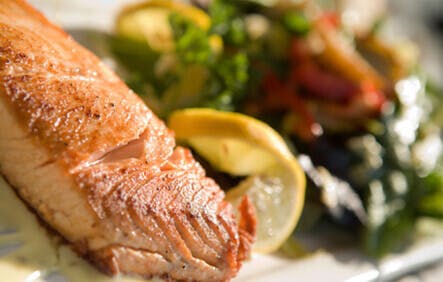Food Poisoning: A-to-Z Guide from Diagnosis to Treatment to Prevention

Eating is one of the great delights in life, but sometimes the food we eat makes us sick.
What is food poisoning?
Food can make us sick if it contains either dangerous organisms or toxins. Often the toxic food looks, smells, and tastes okay. You might suspect food poisoning if several people who have eaten the same thing develop similar symptoms, or if a child gets sick without being exposed to anyone else who is sick.
Common bacteria that cause food poisoning include Botulism, Campylobacter, Clostridium perfringens, E. coli, Salmonella, and Staph.
Norwalk virus is the most common virus that causes food poisoning.
Parasites in food can also cause infections, such as toxoplasmosis. People are more likely to get toxoplasmosis from contaminated food than from changing a litter box.
Toxin-caused food poisonings may be from mushrooms, solanine poisoning, or fish or shellfish poisoning.
Who gets food poisoning?
The type of food poisoning and who is most likely to get sick depends on the bacteria or toxin:
- Botulism. Most often found in improperly canned foods or foods in dented cans, especially corn, green beans, and peas. It can also be found in improperly stored or heated restaurant foods. Infant botulism can be caused by spores in honey.
- Campylobacter. Found in the stool of poultry, other birds, and other farm animals. Children get it easily from eating improperly cooked poultry or drinking unpasteurized milk.
- Clostridium. Found in the stool of humans and other animals. Children most often get it when food handlers have not washed their hands properly, and the food is left out for awhile, as on a steam table. I call it “cafeteria cramps.”
- E. coli. Another organism found in the stool of humans and other animals. It can be spread by improper food handling. Severe cases are often caused by eating undercooked ground beef or drinking unpasteurized milk or apple juice. Eating unwashed fruit or vegetables can also cause illness.
- Salmonella. Commonly found in eggs, poultry, and other meat. Children can get salmonella easily from eating raw or undercooked eggs, undercooked poultry or meat, or drinking unpasteurized milk. Improper food handling is another common cause of salmonella – for example, putting cooked poultry back on the same plate where it had been when raw.
- Staph. This organism is a common cause of skin infections, from impetigo to pimples to boils. This can get in the food during improper food handling. Warm food (100 degrees) is the ideal place for the bacteria to grow and produce a toxin. The toxin is not destroyed by cooking.
- Mushrooms. Seven different classes of toxins are found in a variety of different types of wild mushrooms. Some are lethal.
- Solanine poisoning. This toxin is found in potatoes that have started to sprout. The biggest problem is from the sprouts themselves or from the potato skins.
- Fish poisoning. Some fish poisoning is serious, especially from large, tropical fish. One type is mild: scombroid poisoning. In this case, some tuna and similar fish have excess histamine. Eating them can cause immediate allergy-like symptoms (sweating, flushing, hives, headache, diarrhea, etc.).
- Shellfish poisoning. Some shellfish, especially during red tides, contain nerve toxins. These can cause paralysis, unusual sensations, and hot-cold reversal – among other symptoms.
- Norwalk virus. The most common foods implicated are cookies, sandwiches, salads, ice, and raw shellfish.
- Toxoplasma gondii. People are most likely to get toxoplasmosis from eating undercooked meat.
What are the symptoms of food poisoning?
The most common symptoms of food poisoning are abdominal cramps, accompanied by nausea, vomiting, diarrhea or fever (all attempts by the body to destroy or eliminate the poison).
The symptoms vary widely, depending on the organism or toxin. For further information, see the individual articles.
Is food poisoning contagious?
Some types of food poisoning are contagious through the fecal-oral route, if the hands are not washed properly before eating or handling food and after toileting or diapering.
How long does food poisoning last?
Staph food poisoning is one of the most common types. The symptoms usually begin quickly, within 6 hours of eating the contaminated food. They tend to last for about a day.
The length of food poisoning varies greatly. See the articles on individual poisons.
How is food poisoning diagnosed?
The diagnosis is often made based on the history and physical exam. Sometimes additional studies, such as of the stool or blood, are needed to confirm the diagnosis.
How is food poisoning treated?
Mild food poisoning is treated with rest and efforts to prevent or reduce dehydration.
If there is bloody diarrhea, severe diarrhea, worsening dehydration, or worrisome non-GI symptoms, or if the poisoning may have been caused by mushrooms or shellfish, contact your physician immediately. Other treatment may be necessary.
How can food poisoning be prevented?
Food poisoning is best prevented by taking care when selecting foods, preparing foods, and eating.
Don’t select cans that are dented or swollen, or jars with loose or swollen lids. Don’t choose raw milk (unpasteurized milk) or cheese made from raw milk for children. Don’t feed them undercooked eggs, poultry, or meat.
Wash hands before preparing or serving foods. Have someone else prepare the food if you have cramps, nausea, vomiting, or diarrhea, or have sores on your hands.
When handling raw meat or poultry, consider them contaminated! Wash your hands and any surfaces they have touched before proceeding. Be sure that meats, eggs, and poultry are fully cooked and don’t interrupt cooking to finish it later. Don’t leave prepared foods unrefrigerated for more than two hours.
Teach your kids to wash their hands after toileting and before eating. Instant, alcohol-based hand cleansers can be great for this.
For more suggestions on preventing food poisoning, see the articles on individual poisons, and the article on fecal-oral transmission.
Related concepts:
Solanine poisoning, Scombroid fish poisoning, Shellfish poisoning, Fish poisoning, Mushroom poisoning


